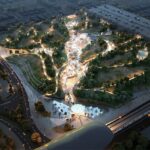Integrating Daylight in Architecture: A Curriculum Overview by CCG
Outline
- Introduction
- Understanding the Importance of Daylight in Architecture
- Historical and Modern Approaches
- Developing a Curriculum for Daylight Integration
- Daylighting Techniques and Tools
- Sustainable Design Practices
- Student Projects and Practical Applications
- Conclusion
- Frequently Asked Questions
- Get in Touch
Introduction
In the field of architecture, the integration of natural daylight into design principles has gained considerable importance. This guide by CCG discusses the significance of incorporating daylight into architectural education, focusing on its impact on sustainable design and enhancing well-being.
Understanding the Importance of Daylight in Architecture
- The Role of Natural Light in Design
Daylight is a fundamental element in architecture, influencing both the aesthetic and functional aspects of design. Learning to effectively harness natural light is essential for creating spaces that are not only beautiful but also energy-efficient.
- Effects on Human Well-being and Productivity
Natural light has been proven to have a significant impact on mental health and productivity. In architecture, incorporating daylight into designs can lead to environments that promote the well-being of occupants, making it a critical consideration in modern building practices.
Historical and Modern Approaches
- Ancient Techniques and Contemporary Innovations
Throughout history, architects have creatively utilized natural light to enhance the ambiance and functionality of spaces. From ancient monuments to modern buildings, the techniques for integrating daylight have evolved, blending historical insights with cutting-edge technology.
Developing a Curriculum for Daylight Integration
- Incorporating Daylighting into Educational Programs
To integrate daylight into architectural education, it's crucial to develop courses and programs that emphasize the significance of natural light. These programs should balance theoretical learning with practical applications, helping students understand the cultural and environmental value of daylight in architecture.
- Creating Specialized Workshops and Seminars
Workshops and seminars that focus on daylighting are vital for providing hands-on experience. These educational sessions should incorporate advanced simulation tools and practical case studies to equip students with the skills to integrate daylight effectively into their designs.
Daylighting Techniques and Tools
- Software for Daylight Analysis
Advanced software tools are essential for accurate daylight analysis in architectural designs. Programs like Radiance and DIVA-for-Rhino allow students and professionals to model how natural light will interact with their designs, ensuring that projects meet both aesthetic and sustainability goals.
- Practical Applications and Case Studies
Case studies are crucial for illustrating the practical application of daylighting techniques. By examining real-world examples, students can see how effective daylight integration improves both the functionality and energy efficiency of various architectural projects.
Sustainable Design Practices
- Combining Daylight with Energy Efficiency
Incorporating daylight into sustainable design practices is essential for reducing energy consumption and enhancing the overall environmental performance of buildings. Architects must learn to balance the aesthetic benefits of natural light with the practical need for energy efficiency.
- Innovations in Daylight Harvesting
Innovative technologies in daylight harvesting are revolutionizing sustainable architecture. These methods allow for the optimal use of natural light, minimizing the reliance on artificial lighting and promoting eco-friendly building practices.
Student Projects and Practical Applications
- Guidelines for Effective Daylight Use
When working on student projects that focus on daylight integration, it's important to follow guidelines that highlight the functional and aesthetic benefits of natural light. These projects provide a practical learning experience, helping students apply their knowledge in real-world scenarios.
- Feedback and Improvement Processes
Constructive feedback and ongoing refinement are key to developing effective daylight integration in architectural designs. Regular critique helps students enhance their designs, ensuring that natural light is used to its full potential in creating functional and visually appealing spaces.
Conclusion
Integrating daylight into architectural education is critical for producing well-rounded professionals who are capable of designing sustainable, livable environments. By emphasizing the role of natural lighting, CCG aims to foster a new generation of architects who can lead the way in sustainable design.
Frequently Asked Questions
Daylight integration is crucial because it enhances both the visual and functional qualities of buildings. It also plays a significant role in promoting sustainability and improving the well-being of occupants.
Natural light positively influences human psychology by improving mood, boosting productivity, and promoting better health outcomes. This makes it a key element in designing healthy living and working environments.
Common tools for daylight analysis include Radiance, DIVA-for-Rhino, and other simulation software that helps architects predict how natural light will interact with their designs, ensuring they meet aesthetic and energy efficiency standards.
A curriculum that emphasizes daylighting equips students with the skills to effectively integrate natural light into their designs. It nurtures creativity, technical proficiency, and a deeper understanding of sustainable design practices.
Sustainable practices include daylight harvesting, using energy-efficient materials, and designing buildings that optimize natural light to reduce the need for artificial lighting, thereby lowering energy consumption and environmental impact.
Get in Touch
If you are interested in learning more about integrating daylight in architecture or have any questions, please feel free to reach out. We're here to assist you in achieving your sustainable design goals.
contact us













